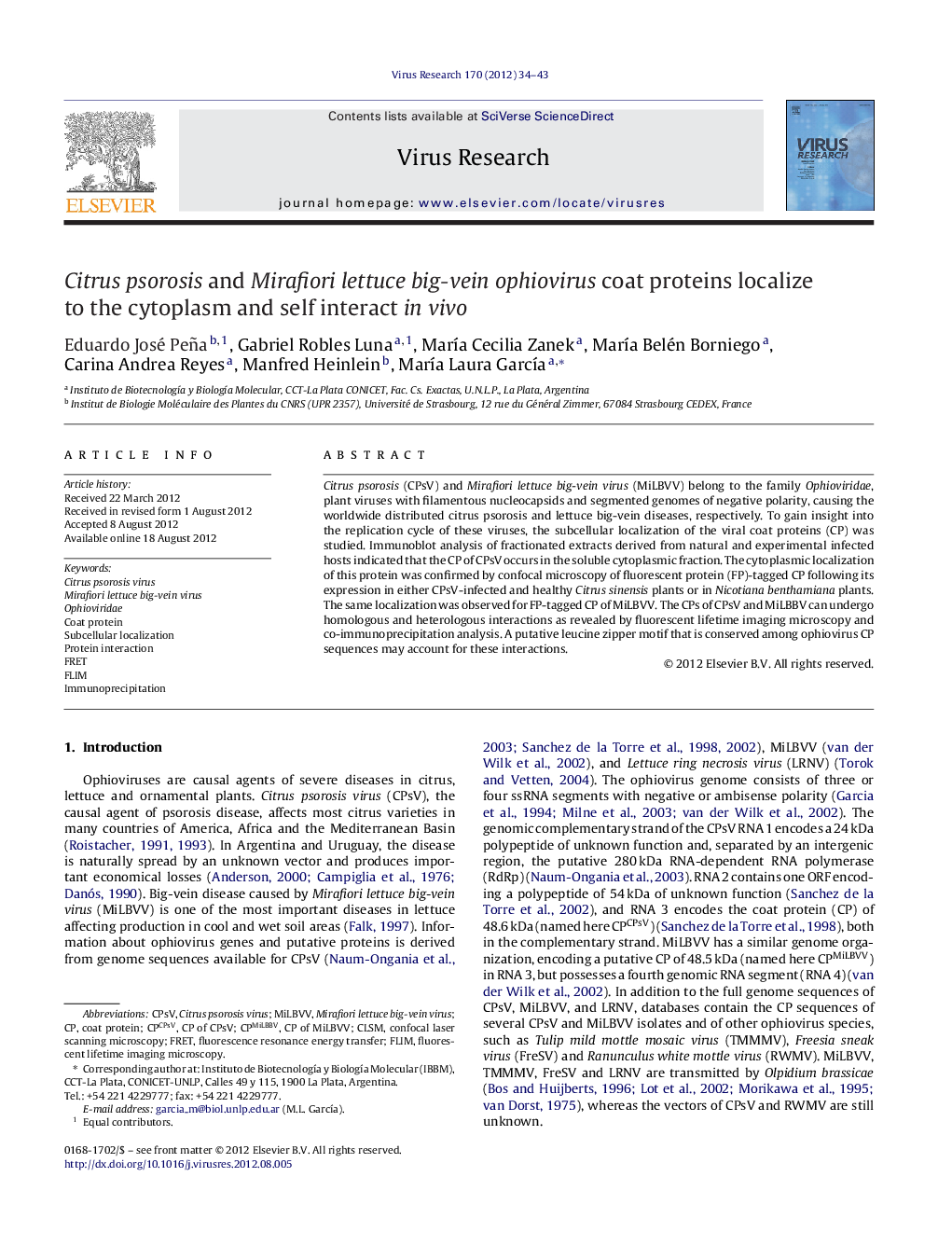| Article ID | Journal | Published Year | Pages | File Type |
|---|---|---|---|---|
| 6142812 | Virus Research | 2012 | 10 Pages |
Citrus psorosis (CPsV) and Mirafiori lettuce big-vein virus (MiLBVV) belong to the family Ophioviridae, plant viruses with filamentous nucleocapsids and segmented genomes of negative polarity, causing the worldwide distributed citrus psorosis and lettuce big-vein diseases, respectively. To gain insight into the replication cycle of these viruses, the subcellular localization of the viral coat proteins (CP) was studied. Immunoblot analysis of fractionated extracts derived from natural and experimental infected hosts indicated that the CP of CPsV occurs in the soluble cytoplasmic fraction. The cytoplasmic localization of this protein was confirmed by confocal microscopy of fluorescent protein (FP)-tagged CP following its expression in either CPsV-infected and healthy Citrus sinensis plants or in Nicotiana benthamiana plants. The same localization was observed for FP-tagged CP of MiLBVV. The CPs of CPsV and MiLBBV can undergo homologous and heterologous interactions as revealed by fluorescent lifetime imaging microscopy and co-immunoprecipitation analysis. A putative leucine zipper motif that is conserved among ophiovirus CP sequences may account for these interactions.
⺠CPsV and MiLBVV CPs are soluble cytoplasmic proteins. ⺠CPsV and MiLBVV CPs undergo homologous and heterologous interactions in vivo. ⺠A leucine zipper conserved among ophiovirus CPs may accomplish these interactions.
